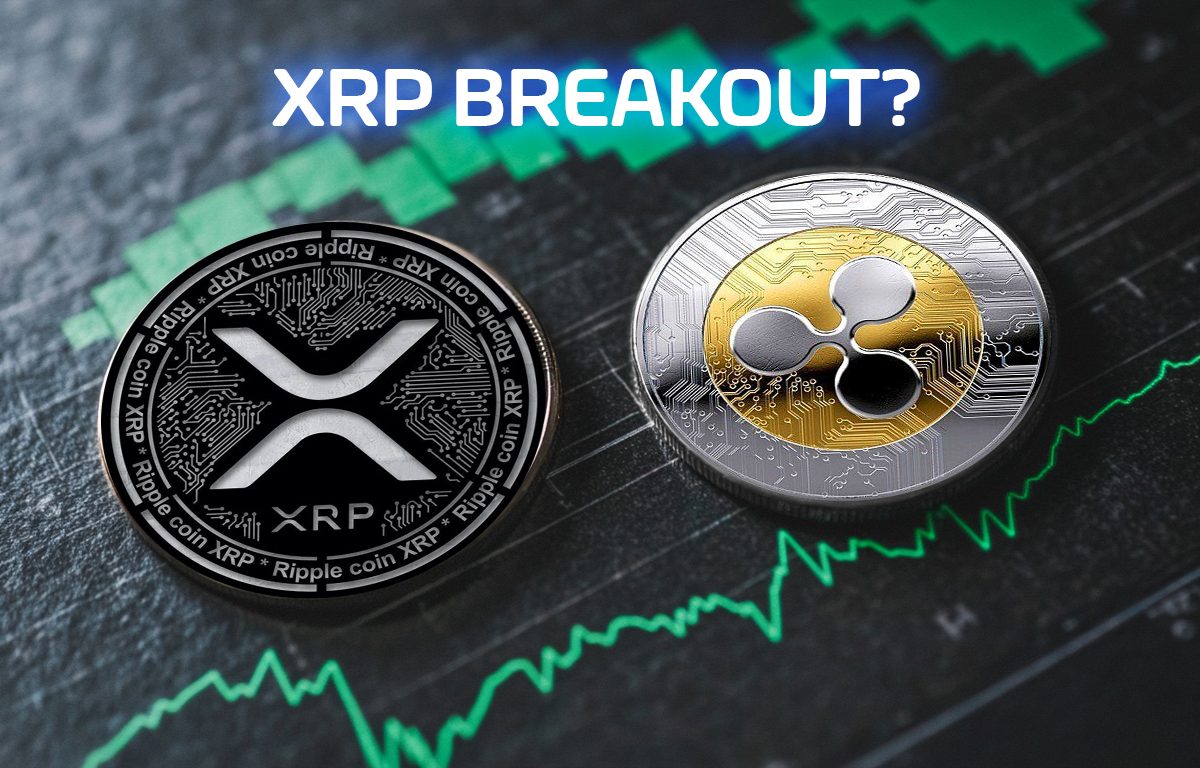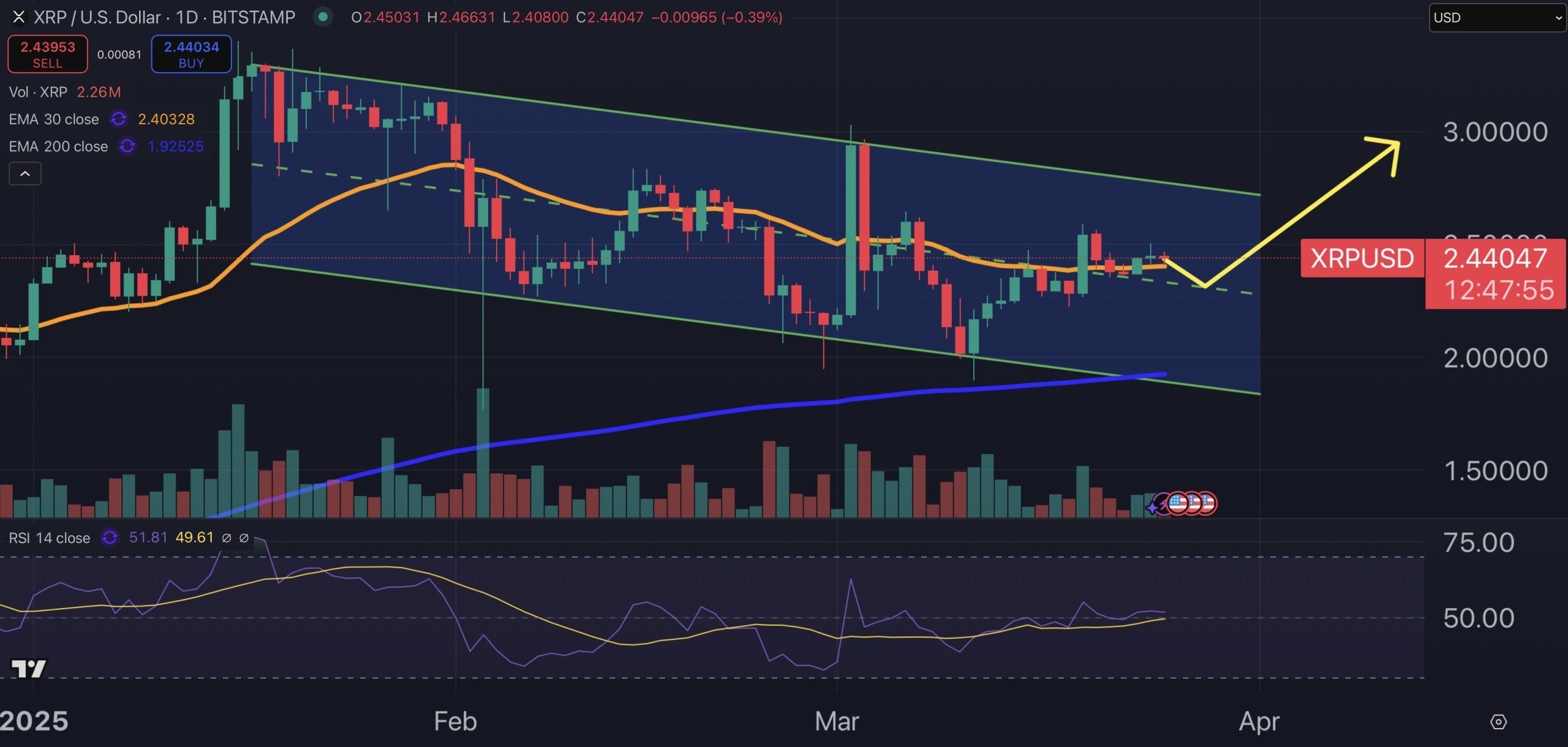Will Ripple’s IPO Launch Spark an XRP Breakout? Key Price Levels to Watch

Share:
XRP has dipped by 1.5% in the past 24 hours, with its slide to $2.44 coming as the crypto market suffers a similar fall today.
Despite this loss, XRP remains up by an impressive 7% in a week and by 14.5% in a fortnight, with the alt also boasting a 285% increase in the past year.
And with the SEC dropping its appeal against Ripple last week, the cryptocurrency firm is in a prime position to continue expanding its business, including a possible IPO in the US.
While not confirmed, such a public offering could provide XRP with a massive boost in the coming months, with the coin’s long-term price prediction looking very good right now.
Will Ripple’s IPO Launch Spark an XRP Breakout? Key Price Levels to Watch
Ripple CEO Brad Garlinghouse has remained tightlipped about a rumored IPO, yet in a recent interview he nonetheless affirmed that the end of the SEC case means Ripple will begin growing more aggressively.
This is bullish in its own right, with XRP likely to benefit from future growthin Ripple’s cross-border business, as well as from any new partnership deals the company signs.
We have seen signs that Ripple’s business was already expanding prior to the SEC dropping its appeal, with the company’s most recent quarterly report – for Q4 2024 – revealing a massive 1,400% quarter-on-quarter increase in DEX volume on XRPLedger.
Given that this was before the end of the Ripple-SEC case, we can expect to see a significant increase in activity in the coming months, particularly if wider market conditions improve (which is largely dependent on the ongoing tariff situation).
For now, the crypto market remains uncertain, with XRP’s chart today showing the coin continuing to regain some momentum after a negative end to February.
Its RSI (purple) has risen back above 50 today, and may continue to regather strength in the coming days.

On the other hand, XRP’s 30-day average (orange) has been well above the 200-day (blue) for several months now, meaning that it is due to fall back below the longer term average.
As such, it may be the case that XRP’s price will have to fall further before we can enter a new period of growth.
This may happen sooner rather than later, given that markets remain spooked by the ongoing tariff disputes between the US and various other countries.
But assuming that things stabilize and improve in the coming months, XRP could reach $3 by H2, and potentially hit $4 by the end of the year.
New Altcoins with High-Growth Potential
As promising as XRP looks, traders in pursuit of faster profits may also be interested in diversifying into newer alts, given that they can grow more suddenly and dramatically.
One area to look involves presales, with the biggest sales often leading to big listings and big returns.
One potential example of this is Solaxy (SOLX), a new Solana-based token that has now raised a whopping $27.8 million in its ICO.
Solaxy is exciting because it’s launching a layer-two network for Solana, one which promises to help users avoid the delays and dropped transactions that can still impact the latter.
As an L2, it will provide lower fees and faster transactions, while also enabling instant bridging between itself and Solana.
Its team also plan to add compatibility with other chains over time, giving Solaxy a wide reach.
As its native token, SOLX will pay for transaction fees, while holders will also be able to stake the token, providing them with a passive income.
This could result in SOLX experiencing very strong demand, particularly if Solaxy gains lots of adoption.
While there isn’t much time left before the Solaxy presale ends, users can still join the sale by visiting the project’s website.
SOLX currently costs $0.001674, although this will rise again tomorrow, meaning that interest buyers should act quickly.
The post Will Ripple’s IPO Launch Spark an XRP Breakout? Key Price Levels to Watch appeared first on Cryptonews.
Will Ripple’s IPO Launch Spark an XRP Breakout? Key Price Levels to Watch

Share:
XRP has dipped by 1.5% in the past 24 hours, with its slide to $2.44 coming as the crypto market suffers a similar fall today.
Despite this loss, XRP remains up by an impressive 7% in a week and by 14.5% in a fortnight, with the alt also boasting a 285% increase in the past year.
And with the SEC dropping its appeal against Ripple last week, the cryptocurrency firm is in a prime position to continue expanding its business, including a possible IPO in the US.
While not confirmed, such a public offering could provide XRP with a massive boost in the coming months, with the coin’s long-term price prediction looking very good right now.
Will Ripple’s IPO Launch Spark an XRP Breakout? Key Price Levels to Watch
Ripple CEO Brad Garlinghouse has remained tightlipped about a rumored IPO, yet in a recent interview he nonetheless affirmed that the end of the SEC case means Ripple will begin growing more aggressively.
This is bullish in its own right, with XRP likely to benefit from future growthin Ripple’s cross-border business, as well as from any new partnership deals the company signs.
We have seen signs that Ripple’s business was already expanding prior to the SEC dropping its appeal, with the company’s most recent quarterly report – for Q4 2024 – revealing a massive 1,400% quarter-on-quarter increase in DEX volume on XRPLedger.
Given that this was before the end of the Ripple-SEC case, we can expect to see a significant increase in activity in the coming months, particularly if wider market conditions improve (which is largely dependent on the ongoing tariff situation).
For now, the crypto market remains uncertain, with XRP’s chart today showing the coin continuing to regain some momentum after a negative end to February.
Its RSI (purple) has risen back above 50 today, and may continue to regather strength in the coming days.

On the other hand, XRP’s 30-day average (orange) has been well above the 200-day (blue) for several months now, meaning that it is due to fall back below the longer term average.
As such, it may be the case that XRP’s price will have to fall further before we can enter a new period of growth.
This may happen sooner rather than later, given that markets remain spooked by the ongoing tariff disputes between the US and various other countries.
But assuming that things stabilize and improve in the coming months, XRP could reach $3 by H2, and potentially hit $4 by the end of the year.
New Altcoins with High-Growth Potential
As promising as XRP looks, traders in pursuit of faster profits may also be interested in diversifying into newer alts, given that they can grow more suddenly and dramatically.
One area to look involves presales, with the biggest sales often leading to big listings and big returns.
One potential example of this is Solaxy (SOLX), a new Solana-based token that has now raised a whopping $27.8 million in its ICO.
Solaxy is exciting because it’s launching a layer-two network for Solana, one which promises to help users avoid the delays and dropped transactions that can still impact the latter.
As an L2, it will provide lower fees and faster transactions, while also enabling instant bridging between itself and Solana.
Its team also plan to add compatibility with other chains over time, giving Solaxy a wide reach.
As its native token, SOLX will pay for transaction fees, while holders will also be able to stake the token, providing them with a passive income.
This could result in SOLX experiencing very strong demand, particularly if Solaxy gains lots of adoption.
While there isn’t much time left before the Solaxy presale ends, users can still join the sale by visiting the project’s website.
SOLX currently costs $0.001674, although this will rise again tomorrow, meaning that interest buyers should act quickly.
The post Will Ripple’s IPO Launch Spark an XRP Breakout? Key Price Levels to Watch appeared first on Cryptonews.













